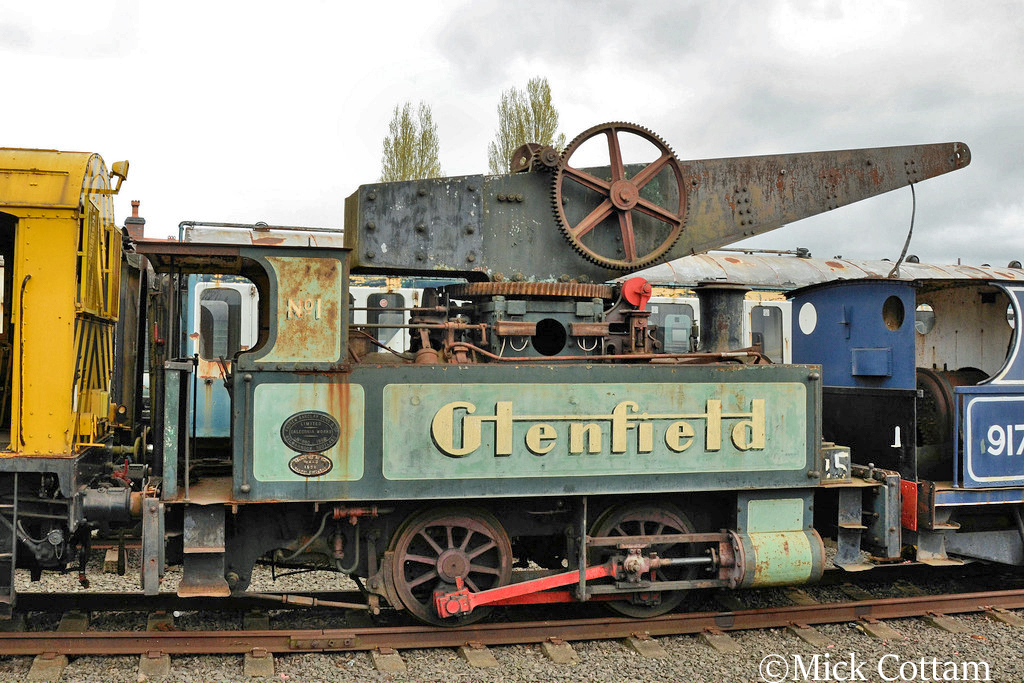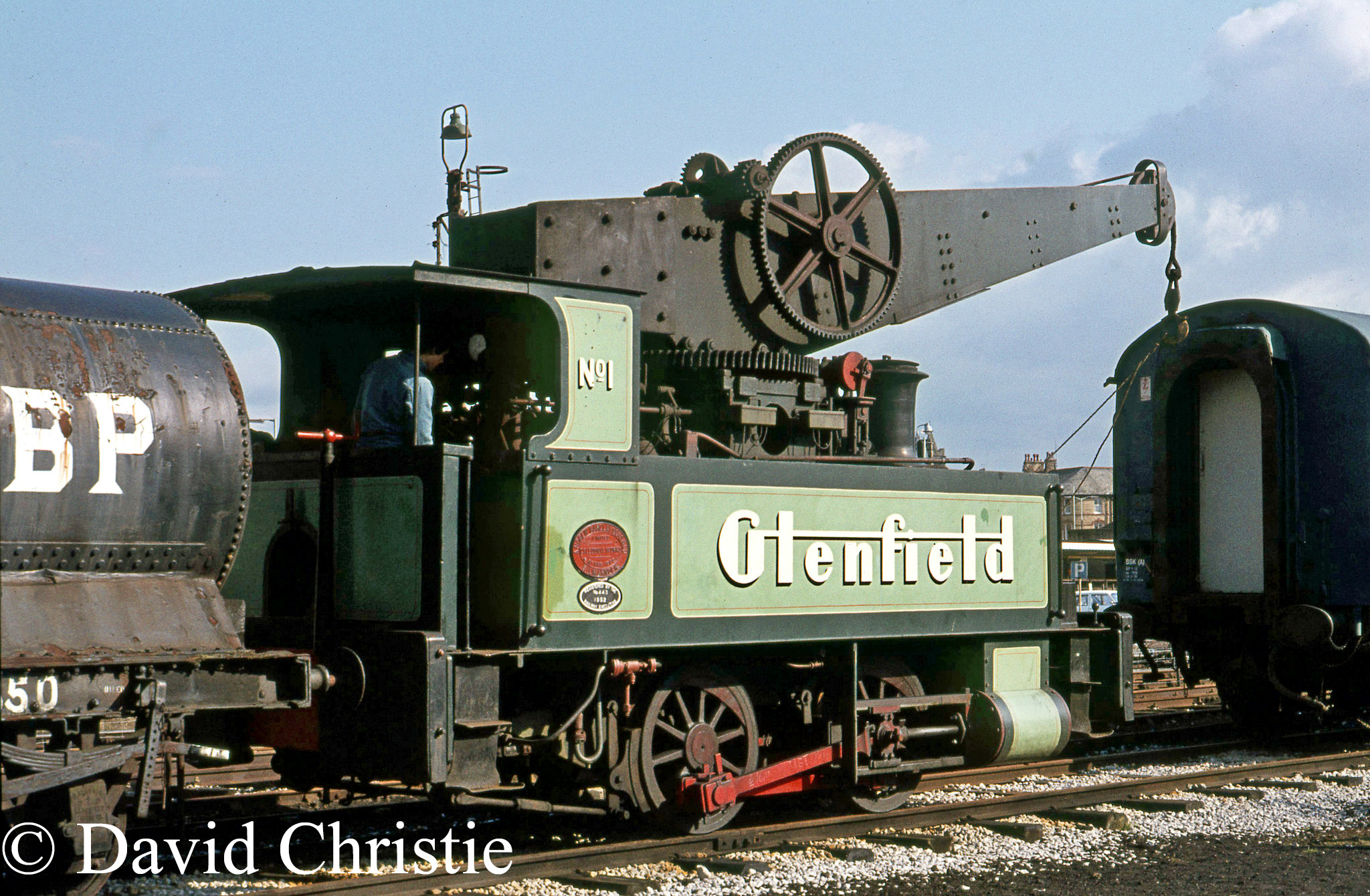
The locomotive was built by the Andrew Barclay company in 1902 as works number 880.
Glenfield No. 1 has a simple 2-cylinder propulsion arrangement using Stephenson Link valve gear. Working pressure was 120 psi. Its 16 ft. rotating crane jib is rated at 5 tons capacity. Uniquely, Glenfield No. 1 is actually three steam engines in one as the main forward and reverse, slewing and hoisting engine are separately controlled each with their own independent regulators and reversing links.
The engine has no conventional buffers to ensure a clear path for objects being hoisted and slewed around the engine in its 16′ radius. When used by the Glenfield and Kennedy Foundry, its main function had been to lift and move heavy castings around the works.
Photographs taken as late as 1966 show that Glenfield was still in productive use at its owner’s site, the Glenfield and Kennedy works at Bonnyton Road in Kilmarnock. Other conventional Andrew Barclay locomotives were also used at the works.
The boiler Had been replaced in 1961 by Vickers at Barrow in Furness and was in good condition; a cosmetic overhaul had been undertaken before the Oxford Polytechnic Transport Society (OPTS) took it over, though this was not adequate to prepare it for traffic.
Its fixed jib and protruding hoisting cable guides at the end of the jib meant that it was permanently ‘out of gauge’ at Didcot and its operational locations were heavily restricted.
Whilst Glenfield No. 1 was in the care of the OPTS , it was re-tubed, and then stripped of all the mechanical parts which were re-metalled and re-bushed. A mechanical lubricator was installed for the main cylinders and 4 new ‘total loss’ oil reservoirs were added under the slewing wheel assembly to feed the journals on the main axles as the engine had proved very ‘stiff’ when moving forwards – this was only partially successful. In 1972, the slewing gear worm wheel crankshaft was trued up and re-metalled by Bob Wheeler at the Oxford Engineering firm of F.J.Payne and Son – and was returned to perfect working order by him.
The members of OPTS were thus able to spend many happy hours gently rotating the jib, and lifting things up and down, sometimes to useful effect. As a gesture to posterity, the members of the OPTS ‘signed’ their names on the top left upper slide bar when reassembling the main motion in 1973.
Glenfield No. 1 eventually moved to a private site at a former ironstone railway system at Market Overton in Rutland – then to Steamtown Carnforth, but by the early 1980’s it had ceased to steam and had become a static exhibit.
In 2000 Glenfield was purchased by John Lees, and then in 2006 it was acquired by the LH Group and moved to the Statfold Barn site in Tamworth. On November 6th 2013 it arrived at Chasewater Railway for storage.
It moved to the Ribble Steam Railway in October 2015.
In May 2019 it was announced that the locomotive had been put up for sale following the death of the owner. The locomotive was still available to purchase in October 2020.



